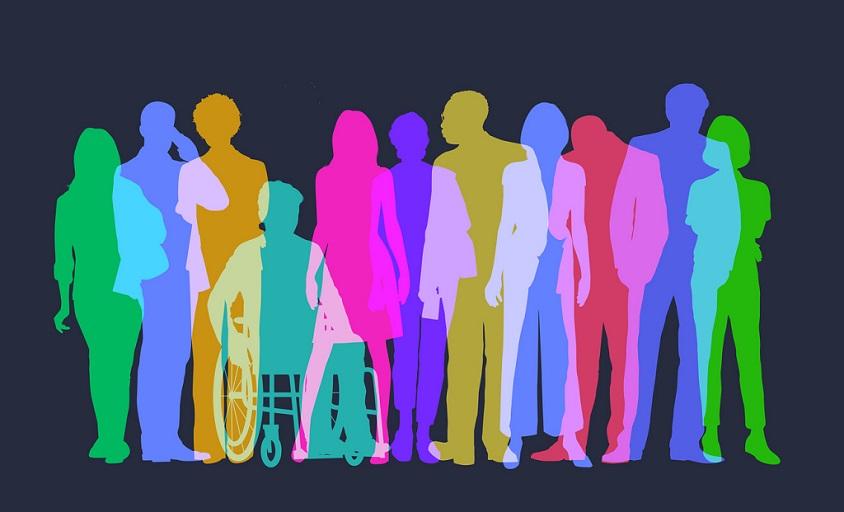How to make workplaces more inclusive for people with invisible disabilities
Employees with diabetes, epilepsy, Crohn’s disease, chronic pain, and other invisible disabilities should all be part of your DEI plan, says this HR leader, who is living with a developmental disability.
The conversation around diversity, equity, and inclusion (DEI) has gained significant momentum in recent years, often with a focus on identities related to race, gender, and sexuality. While these discussions are essential and have led to positive changes in the workplace, it’s crucial not to overlook another vital aspect of diversity: disabilities. As we recognize National Disability Employment Awareness Month in October, it’s time to shed light on a significant aspect of disability that often goes unnoticed—the world of invisible disabilities.
Inclusivity in the workplace has come a long way, and many companies have recognized the value of promoting diverse teams and fostering a sense of belonging for all employees. However, as some organizations decide to eliminate Chief Diversity Officers’ roles, we must remain cautious not to alienate employees. It is crucial to ensure that their needs are still met. This is not only because it’s the right thing to do but also because there are legal implications, especially regarding potential discrimination related to disability status.
THE UNSEEN SIDE OF DISABILITY
Disability status is often considered when shaping workplace policies, but too often, these policies focus primarily on physical disabilities. While accessible buildings, adaptive technology, and workspace accommodations are essential in maintaining an inclusive workplace, true inclusivity requires us to go beyond adapting only to the disabilities we see. Numerous disabilities are not immediately apparent, such as diabetes, epilepsy, Crohn’s disease, chronic pain, and visual or auditory disabilities, which can significantly impact how people work. Individuals with these conditions often require additional accommodations to thrive in their roles.
Moreover, we must recognize and destigmatize learning and developmental disabilities that affect social interactions and communication styles, such as autism spectrum disorders, ADHD, mental illness, and other social disabilities. As both an HR leader and someone who lives with a developmental disability, I can personally attest to the challenges we face in the workplace. Our unique communication styles can be misunderstood, and we may be perceived as too direct, unsociable, or in some cases, even unprofessional.
Many of us with learning or developmental disabilities struggle with social interactions or compulsory gatherings, leading to anxiety and discomfort. We may need to make excuses for not staying long at work events or choosing to sit apart to alleviate the anxiety of close proximity. Unfortunately, this can lead to us being seen as aloof or unapproachable when, in truth, we struggle with many social cues others rely on. The isolation we often feel is exacerbated when the work environment fails to educate other employees on interacting with us and making us feel welcomed and valued rather than different.
Over the years that I have worked on adapting to what is considered “normal,” most people do not even realize I have a disability. However, stigma remains a significant concern, especially for non-physical disabilities, which are so unique to the individual that there is no one-size-fits-all approach. For example, accommodations for a full-time wheelchair user can be straightforward. However, accommodating someone with chronic pain who experiences fatigue and only sometimes use a mobility aid is much less so. The spectrum of limitations varies from person to person, making it essential to treat each individual and their needs with the understanding and empathy they deserve.
One of the main challenges faced by individuals with unseen disabilities is the reluctance to disclose their condition at work. Research shows that a staggering 88% of employees with invisible disabilities choose not to reveal them to avoid stigma and discrimination. This fear of being judged or misunderstood can lead to further isolation, resulting in lower morale and reduced productivity. We must create an environment that encourages employees to feel comfortable seeking the accommodations they need without fear of repercussions.
CREATING AN INCLUSIVE ENVIRONMENT FOR UNSEEN DISABILITIES
As we celebrate National Disability Employment Awareness Month this October, let us renew our commitment to improving disability awareness in the workplace. Here are some important steps that companies can take to foster a more inclusive environment for employees with unseen disabilities:
- Educate and Raise Awareness: Offer training and workshops to employees and managers to increase awareness and understanding of unseen disabilities. Create an open dialogue where employees can share their experiences and challenges without fear of judgment.
- Implement Flexible Accommodation Policies: Implement flexible accommodation policies, recognizing that accommodations may vary widely depending on the person and their disability and that it’s essential to be responsive to their needs.
- Promote a Culture of Acceptance: Foster a culture of acceptance and empathy where employees feel comfortable being their authentic selves without fear of discrimination. Embrace and celebrate diversity, including those with unseen disabilities, and recognize their strengths and contributions to the organization.
- Create Employee Resource Groups (ERGs): Establish ERGs for employees with disabilities to provide a support network and platform for sharing experiences and advocating for positive change.
- Review Existing Policies: Regularly review existing policies to ensure they address the needs of employees with disabilities. Make necessary adjustments to promote inclusivity.
By recognizing the importance of unseen disabilities in the workplace and destigmatizing disabled workers, we can create a more inclusive and supportive environment for all employees. Let us take this National Disability Employment Awareness Month as an opportunity to reflect on our practices and commit to fostering a workplace that embraces diversity in all its forms. Together, we can build a stronger, more inclusive, and compassionate workforce for the future.


